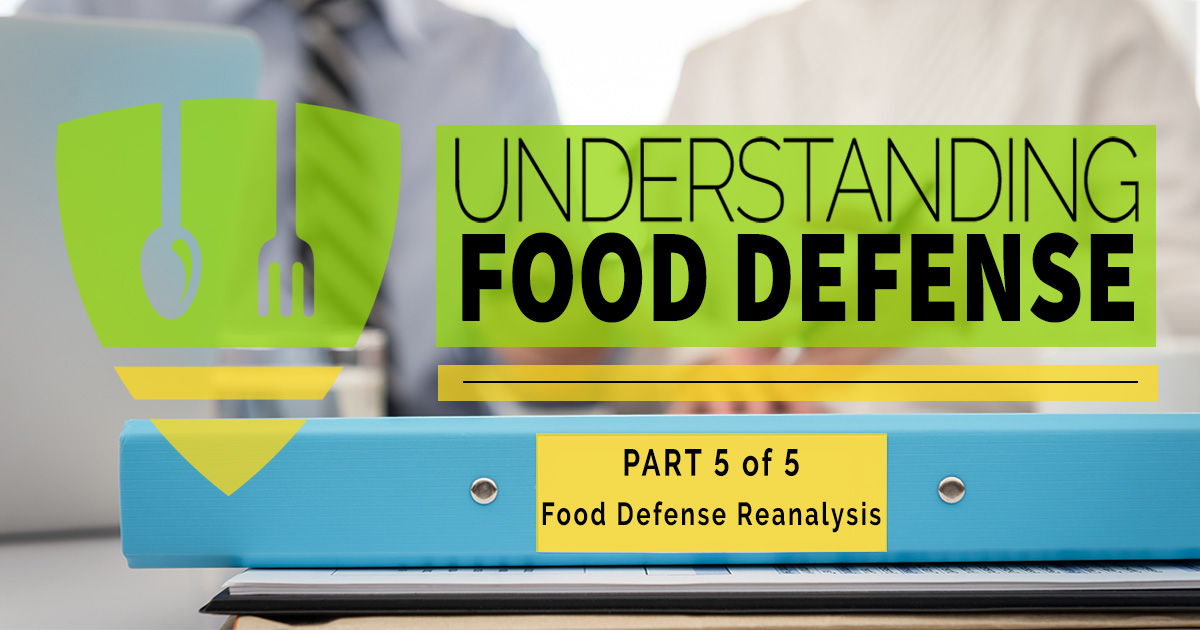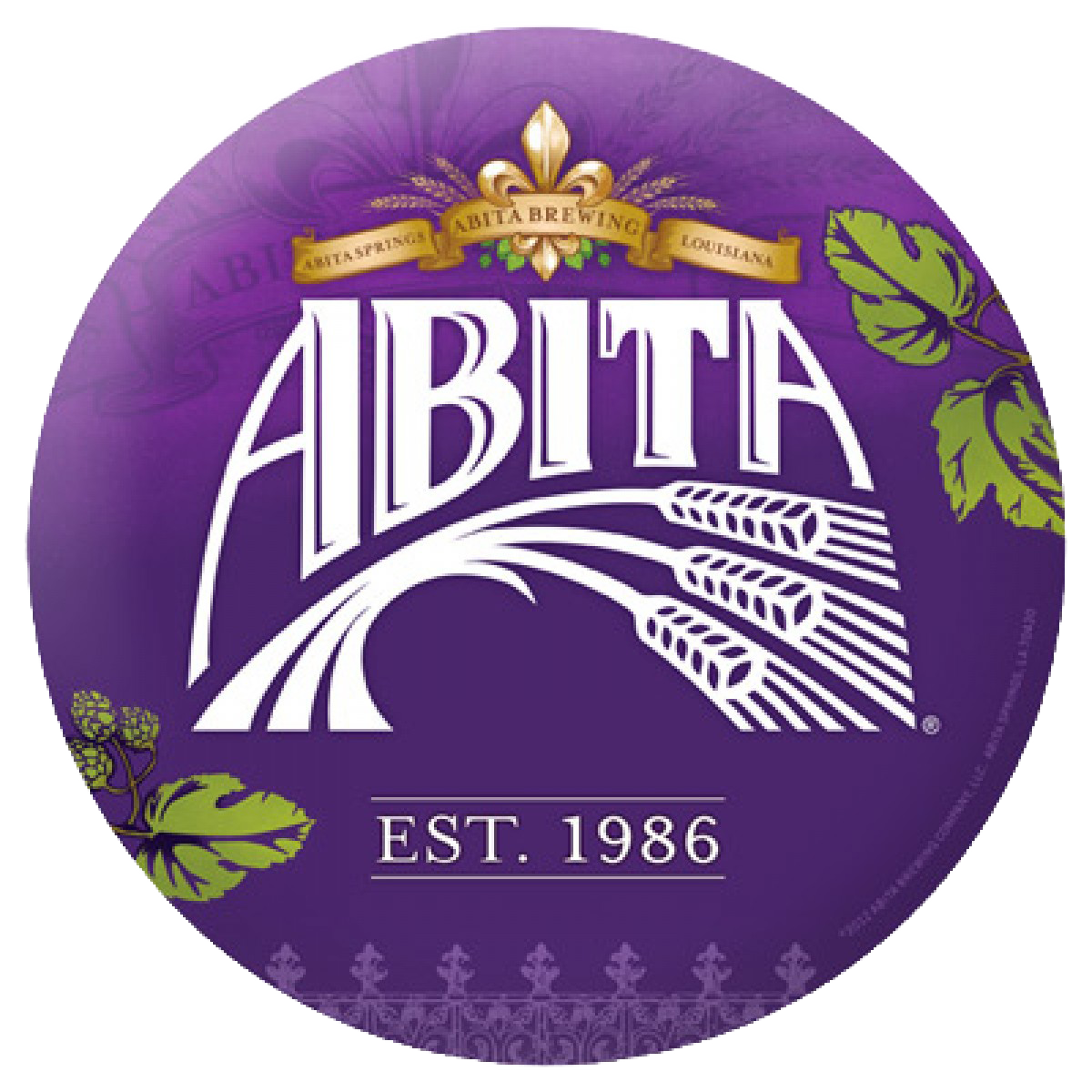Food Defense Reanalysis
Food Defense Reanalysis
Reanalysis, Records & Training RequirementsIn part 4 of our food defense series - Food Defense Management Components, we reviewed the requirements for properly monitoring mitigation strategies at each actionable process step. We then discussed how corrective actions must be taken when monitoring reveals that a mitigation strategy failed or was incorrectly implemented. Lastly, the element of verification is necessary to make sure the program, as a whole, is properly implemented and records are being reviewed as appropriate.
In today’s part 5 of our series, we will conclude with understanding the current requirements for reanalyzing your program, along with recordkeeping and training responsibilities.

Reanalysis
What is reanalysis and when is it required?Reanalysis is the process of analyzing something again. In this instance, it simply means that the program must be reviewed as appropriate to make sure it is still effective. The Mitigation Strategies to Protect Food Against Intentional Adulteration rule states that reanalysis must be done:
- At least every three years
- Whenever changes are made at your facility that may create the opportunity for a new vulnerability
- When a significant increase in a previously recognized vulnerability has been identified
- Whenever information about new vulnerabilities associated with the process or facility are identified
- If you find the program, either part or as a whole, is not being properly implemented
- Whenever FDA requires a reanalysis due to new identified vulnerabilities and threats to the food supply,
If any of the above situations apply, then reanalysis should be done as quickly as possible to ensure any new potential vulnerabilities are quickly mitigated.
Records and Record Retention
Records
We have all heard of the saying, if you didn’t record it, you didn’t do it! It is up to each facility to prove that all components of the food defense rule are in place and effective. The best way to do this is by keeping records of the program and implementation.
Records include the food defense plan as a whole, as well as any supporting documents, such as records of monitoring, corrective actions and verification checks. As with any regulated program, effective recordkeeping is crucial in proving compliance to required implementation.
Food Defense Plan records should:
Be original, true copies or electronic
Be accurate and legible
Be generated in real time (as the activity happens)
Contain actual values/observations when appropriate
Contain necessary details to show compliance
Have the facility name included (as address if multiple facilities)
Be properly dated and contain times of activity performed
Contain the initials or signature of the person performing the activity
Identify the product and lot code/traceability when necessary
Record Retention
Training Requirements
In line with all of the FSMA requirements, anyone carrying out key activities of the plan must be a qualified individual. A qualified individual is defined in the rule as “a person who has the education, training, or experience (or a combination thereof) necessary to perform an activity required under subpart C of this part, as appropriate to the individual’s assigned duties.” That qualified individual does not necessarily have to be an employee of the establishment.
To be a qualified individual, one can simply take a training class recognized as adequate by FDA, such as our Intentional Adulteration - Conducting Vulnerability Assessments class, or otherwise be qualified through other training or job experience. Those individuals that are assigned to actionable process steps must also have training in food defense awareness. Individuals who have supervisory roles within the program must also be qualified, either by training or experience, to do so.
Summary
Keeping current with food safety incidents and potential threats to the food supply from acts of intentional adulteration is an ongoing process all food manufacturing facilities must now consistently practice. Having a robust food defense plan with a thorough vulnerability assessment and with effective mitigation strategies, monitoring and prompt reanalysis will go a long way in preventing acts of intentional adulteration at your facility. Taking proactive and preventive measures, such as ongoing employee training and frequent verification activities, will help with keeping the program fresh and continuously improving.
We hope that our food defense series has been helpful with understanding the requirements under the new food defense rule, Mitigation Strategies to Protect Food Against Intentional Adulteration. If you still have questions about how to properly implement these new requirements, we encourage you to take one of our upcoming food defense classes. If you need a more personalized approach, contact us today to schedule a free consultation or an in-house training.
About the author

Lance Roberie
Food Safety Consultant and TrainerLance Roberie has over 26 years of quality assurance and food safety experience within the food industry. Mr. Roberie holds the following certifications:
- Certified Food Safety HACCP Manager
- Preventative Controls for Human Foods (PCQI) Lead Instructor
- Meat & Poultry and Seafood HACCP Lead Instructor
- FSPCA Food Defense (IAVA) Lead Instructor
- ASQ Certified Manager of Quality & Organizational Excellence
- ServSafe Instructor and Exam Proctor
- Internal Auditor and GFSI Specialist
Lance and the Food Safety & Quality Services’ training curriculum will advance your team's food safety knowledge through certified training, consulting, and “real life” industry scenarios.
upcoming Classes
October 9, 2025 09:00 AM - 03:00 PM
September 17, 2025 09:00 AM - 03:00 PM
October 14, 2025 08:00 AM - October 16, 2025 05:00 PM
Need a Food Safety Specialist?
Free 15 Minute Consultation.Learn how we helped Abita Brewing Company pass their first food safety audit with an A grade.

